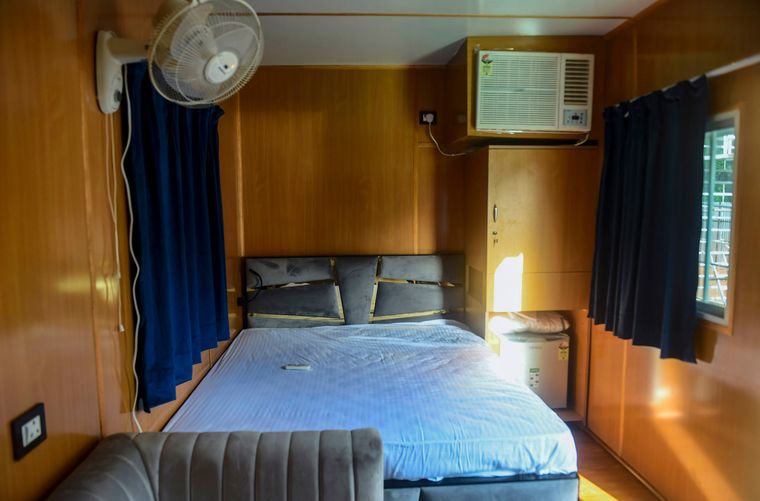It is like a magic village that pops up on two acres every night and disappears in the morning, only to come up again on another site. Among the crucial elements of the Bharat Jodo Yatra entourage are the 60 truck-mounted shipping containers which provide sleeping spaces and other facilities for Rahul Gandhi and other yatris.
Each container is numbered. Containers one and two are for Rahul (he has two because of security reasons). His accommodation space has a bedroom and an attached bathroom. There is a small sofa and a table next to his cot. The windows have blue curtains, the bedspreads are white and the wall has a portrait of Mahatma Gandhi on a padyatra. The container also has a refrigerator and a water heater.
For other yatris, there are different categories of accommodation. There are 12-bedders, eight-bedders, four-bedders, double-bedders and single-bedders. Refrigerators are available in single and double-bedders. Sound-proof generators take care of power supply. Charging and locker facilities, too, are provided.
Only five of the multi-bedded containers have bathroom facilities; these are used by women yatris. There are also dedicated containers with toilet facilities. Laundry facilities are available at the campsite. The Bharat yatris carry six sets of clothes, and they can access laundry facilities once in three days.
Also read
- Ramesh Chennithala says Bharat Jodo Yatra that ‘transformed Rahul Gandhi’ was his brainchild
- ‘Bharat Jodo Yatra taught me...’ Rahul Gandhi reminisces experience of movement that changed Congress's fate
- Bharat Jodo Nyay Yatra to begin on Sunday, focus on issues of social, political justice
- How Congress plans to celebrate the anniversary of Bharat Jodo Yatra
- Amid heavy snowfall, Bharat Jodo Yatra finale begins
- Five months, 4,000 km: Bharat Jodo Yatra to culminate in Srinagar today; rally planned
One container has a conference room for private meetings. It has sofas and chairs, and a monitor for video conferences. One container is a clinic, with a doctor and assistants. At every campsite, a food tent is set up and meals are served to around 450 people. The kitchen team, which travels with the group, finish cooking before the yatris reach the campsite.
There is a dedicated team to set up and dismantle the sites. It takes five hours to set the site up, and half that time to dismantle it. There are around 250 logistics personnel and support staff, including cleaners, drivers, laundry workers and generator operators. Campsites are double-fenced and have restricted access. Watch towers are established at each site to ensure security. In addition, the sites are protected by respective state police forces and the Central Reserve Police Force.



